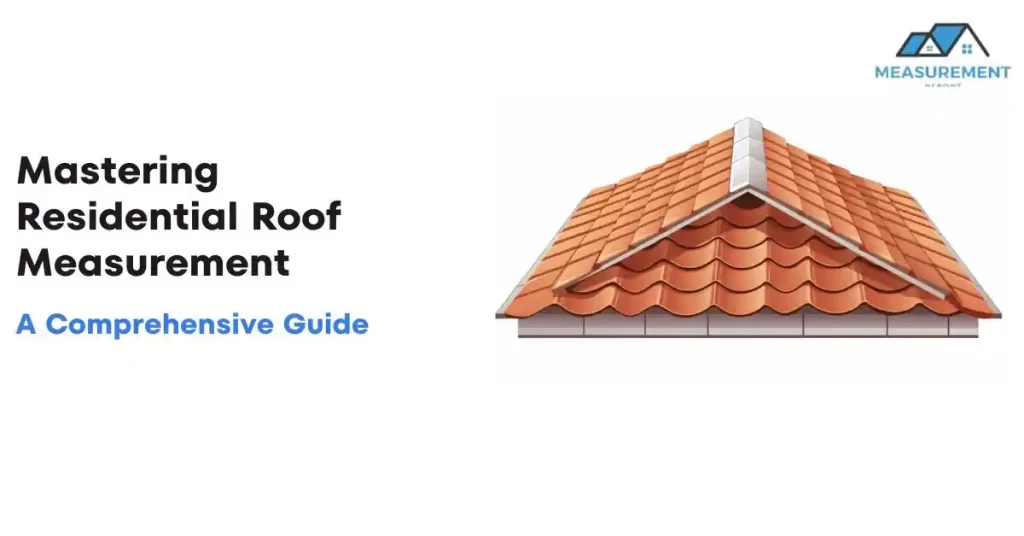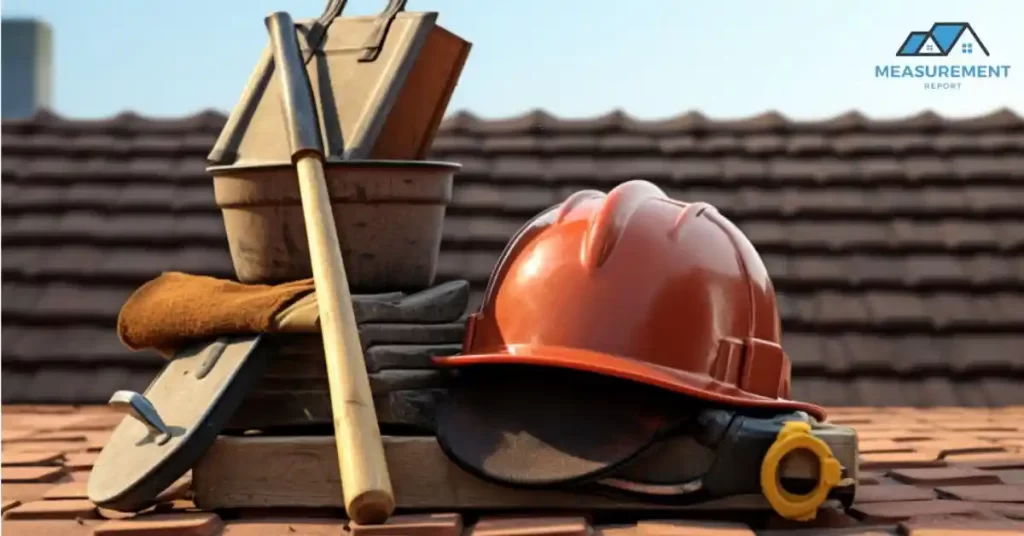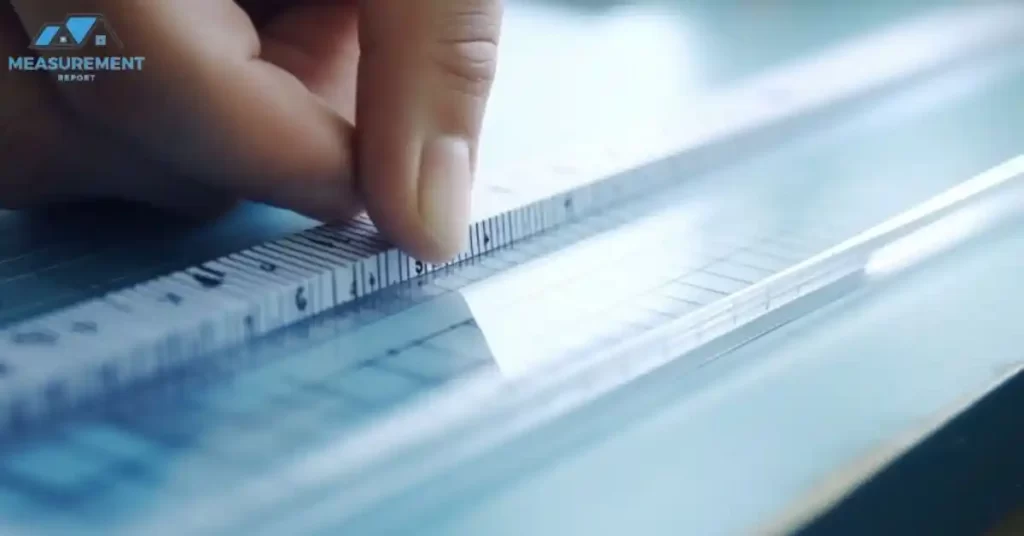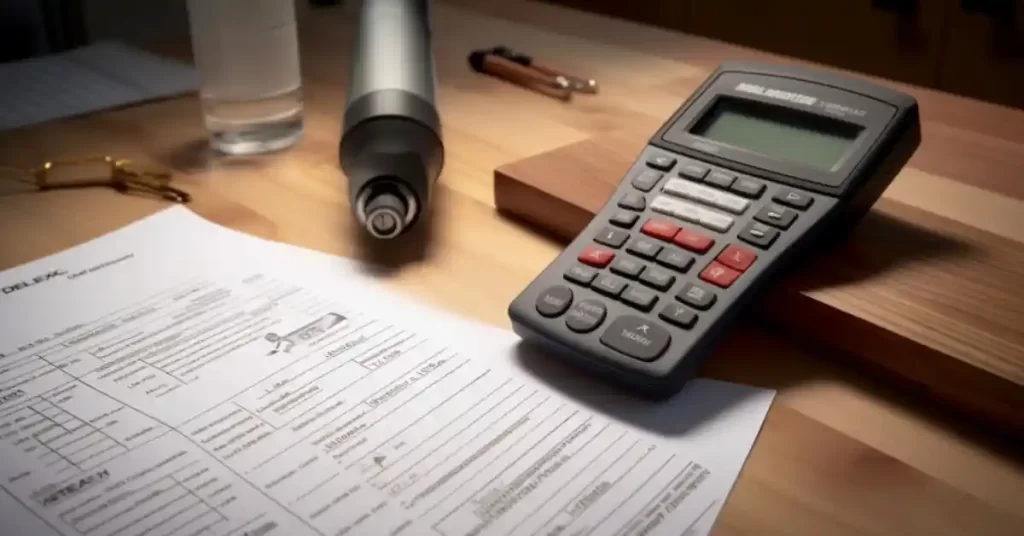Mastering Residential Roof Measurement: A Comprehensive Guide

In this article, we delve into the critical task of accurately measuring the dimensions of a residential roof. Roof measurement is not just a preliminary step in construction and maintenance; it’s a cornerstone for ensuring the integrity, safety, and cost-effectiveness of your home. Whether you’re a homeowner looking to undertake a DIY project, a professional roofer refining your skills, or someone interested in installing solar panels, understanding the nuances of roof measurement is essential. We will address the central question many homeowners face: “How can I accurately measure the dimensions of my residential roof?”
Throughout this comprehensive guide, we’ll explore various aspects of residential roof measurement. We’ll discuss traditional and advanced measurement techniques, the importance of precision, the tools and technology available, and the benefits of accurate measurements for homeowners. This article is structured to provide insights into both DIY methods and the advantages of professional services. We aim to cover all facets of this topic, using the keyword “Residential roof measurement” as a guiding light, ensuring that we provide relevant, valuable, and actionable information for our readers.
Essentials of Roof Measurement
Basic Concepts: Understanding Roof Dimensions, Angles, and Area Calculations
The foundation of residential roof measurement lies in grasping the basic concepts of roof geometry. Here, we’ll unpack the key elements:
- Roof Dimensions: Learn about the length, width, and slope of various roof types, from simple flat roofs to more complex gable and hip roofs.
- Angles and Pitch: Understanding the pitch or angle of your roof is crucial. It’s not just a matter of aesthetics; the pitch affects everything from weather resistance to material choice.
- Area Calculations: We’ll guide you through calculating the total surface area of your roof. This calculation is essential for material estimates, cost calculations, and understanding the scope of any roofing project.
These concepts are the building blocks for any roof measurement task and are critical for accurate and effective planning and execution of roofing projects.
Tools and Equipment: Essential Gear for Accurate Roof Measurement

Having the right tools is paramount for accurate roof measurement. We will cover two aspects under this section:
- What Tools and Equipment are Needed for Residential Roof Measurement?: This part will introduce you to the essential tools for roof measurement. These include:
- Measuring Tapes: The most basic yet essential tool for manual measurements.
- Laser Distance Measurers: For more precise and effortless measurements.
- Inclinometers or Pitch Gauges: To determine the roof’s angle or pitch accurately.
- Ladders and Safety Gear: Emphasizing the importance of safety while undertaking roof measurements.
- Roof Measurement Tools for Homeowners: Here, we will focus specifically on tools that are user-friendly and suitable for homeowners who prefer the DIY route. This includes:
- Smartphone Apps: Many apps can calculate roof dimensions using photographs.
- Drones: For a more advanced approach, drones can be used to capture aerial images and help in calculating roof measurements.
DIY Roof Measurement
Step-by-Step Guide: Accurate Residential Roof Measurement
Embarking on a DIY roof measurement project requires careful planning and execution. This section provides a step-by-step guide to ensure accuracy and efficiency:
- Preparation: Gather all necessary tools such as a measuring tape, ladder, safety gear, inclinometer, and possibly a drone or smartphone app.
- Safety Setup: Ensure your ladder is stable and use safety harnesses if needed. Safety is paramount in roof measurement.
- Measuring Roof Base: Measure the length and width of your house’s base. This provides a reference point for further calculations.
- Calculating Roof Pitch: Use an inclinometer or a smartphone app to determine the pitch of your roof, which is essential for accurate area calculations.
- Measuring Sloped Areas: For sloped roofs, measure the length and height of each slope.
- Area Calculation: Combine your measurements to calculate the total roof area. Remember to account for any irregularities or protrusions.
- Double-Check Measurements: It’s crucial to recheck measurements for accuracy.
This guide aims to provide homeowners with a clear roadmap for measuring their roofs, emphasizing accuracy at every step.
DIY Techniques: DIY Roof Measurement Techniques and Challenges

DIY roof measurement, while cost-effective, comes with its own set of challenges. This part of the article will cover:
- Basic Techniques: How to use traditional tools like tape measures and inclinometers effectively.
- Digital Solutions: Leveraging technology like drones and smartphone apps for more accurate measurements.
- Common Challenges: Address issues like dealing with complex roof shapes, ensuring accuracy in sloped areas, and managing the physical demands of roof measurement.
Safety Precautions: Ensuring Safety While Measuring a Roof
Roof measurement can be hazardous without proper precautions. This section highlights important safety measures:
- Ladder Safety: Guidelines on using ladders safely, including placement and stability.
- Personal Protective Equipment (PPE): The importance of using harnesses, helmets, and non-slip shoes.
- Awareness of Roof Condition: Caution against walking on damaged or weak roof areas.
- Weather Considerations: Advising against roof measurements in adverse weather conditions like rain, strong winds, or extreme temperatures.
Roof Measurement for Solar Panel Installation

1. Can I Measure My Roof for Solar Panel Installation on My Own?
- Process Guidance: Homeowners can indeed measure their roofs for solar panel installation. It requires careful planning and an understanding of the roof’s layout.
- Key Factors to Consider:
- Available Roof Space: Measure the length and width of your roof to determine the total available space.
- Orientation and Pitch: The roof’s orientation (e.g., south-facing in the northern hemisphere) and its pitch affect solar panel efficiency. Use an inclinometer to determine the pitch.
- Potential Obstructions: Identify and measure around obstructions like chimneys, vents, or skylights. These can create shaded areas that impact panel efficiency.
- Panel Calculation Tips:
- Determine the size of the solar panels you plan to use and calculate how many can fit based on your roof measurements.
- Consider using an online solar panel calculator to estimate the energy output, which factors in roof measurements, panel efficiency, and local solar irradiance.
2. Detailed Steps for Roof Measurement in Solar Panel Installation
- Assessing Roof Structure: Check the roof for any signs of damage or wear. The roof should be strong enough to support the weight of the panels.
- Measuring for Panels:
- Create a detailed sketch of your roof, marking dimensions and areas where panels could be placed.
- Consider areas that receive consistent sunlight throughout the day.
- Additional Considerations:
- Assess shading from trees or neighboring buildings at different times of the day and seasons. This can be done using tools like a solar pathfinder.
- Consult local zoning laws for any restrictions on solar panel installations.
Insurance Claims: Utilizing Roof Measurements
- Importance in Insurance Claims:
- Accurate roof measurements are vital for filing insurance claims, especially post-storm or other damage events. They provide a quantifiable basis for damage assessment.
- Measurements help in detailing the extent of damage and the area that needs repair or replacement, which is crucial for accurate claim settlements.
- Guidelines for Documenting Measurements for Claims:
- Document the pre-damage state of the roof, if possible, through photos or previous measurements.
- After damage, take detailed measurements of the affected areas. Include photographs from various angles.
- Create a comprehensive report combining these measurements and photographic evidence.
- Include a detailed description of the damage, and how it has affected the overall integrity of the roof.
- Tips for Effective Communication with Insurance Companies:
- Be thorough and precise in your documentation. Clarity and detail can expedite the claims process.
- It can be beneficial to have a professional roofer or an insurance adjuster verify the measurements and the extent of the damage.
- Understand your insurance policy in detail – know what is covered and the extent of coverage for roofing damage.
By focusing on these specific applications, homeowners can gain practical insights into how roof measurements are not only essential for projects like solar panel installation but also play a crucial role in navigating insurance claims, ensuring fair and efficient resolution.
Technology and Software in Roof Measurement
In the realm of residential roof measurement, several software options are available that simplify the process by offering features such as aerial imagery analysis, 3D modeling, and automatic calculation of roof dimensions and area. Here are some of the top software options, along with their key functionalities:
- GAF QuickMeasure:
- Website: GAF QuickMeasure
- Features: Offers accurate roof measurements using high-resolution imagery. It provides reports in under 1 hour for single-family homes and under 24 hours for multi-family and commercial properties.
- AccuLynx:
- Website: AccuLynx
- Features: A user-friendly business management software that helps roofing contractors streamline processes. It includes features for selling jobs, staying on schedule, and managing customer relationships.
- iRoofing:
- Website: iRoofing
- Features: Allows users to upload blueprints and trace linear features of the roof on iOS and Android devices. It instantly and accurately calculates roof measurements and is suitable for both existing structures and new builds.
- RoofSnap:
- Website: RoofSnap
- Features: A measurement and estimating software solution designed for roofing businesses and insurance adjusters. It manages material orders, blueprint and aerial measurements, and project estimating.
- JobNimbus:
- Website: JobNimbus
- Features: A cloud-based CRM and project management software with mobile apps for Android and iOS. It offers features for lead tracking, task management, document management, estimating, invoicing, and scheduling.
- SkyMeasure:
- Website: SkyMeasure
- Features: Provides estimation reports for residential, commercial, wall reports, and site mapping. Known for its simplicity in approach and pricing.
- Roofr:
- Website: Roofr
- Features: Offers free aerial, satellite, and drone roof measurement apps for roofing contractors. It provides unlimited measurements, high-definition imagery, and free support.
These software options are designed to cater to different needs, from DIY measurements to professional roofing company management. When choosing a software, homeowners and professionals should consider factors such as ease of use, accuracy, feature set, and how well the software integrates with other tools or workflows they may use.
Top of Form
Professional vs. DIY Measurement
When it comes to roof measurement, the decision between taking a DIY approach or hiring a professional is pivotal and depends on several factors. Here’s an in-depth look at both options, along with the scenarios where each is most suitable:
Professional vs. DIY Measurement
When to Hire a Professional: Assessing the Need and Process
- Is It Necessary to Hire a Professional for Roof Measurement?
- Complex Roof Designs: Professional expertise is highly recommended for complex roof designs that have multiple levels, slopes, or unique features. Professionals have the experience and tools to accurately navigate and measure such complexities.
- Safety Concerns: If accessing your roof poses any safety risks due to its height, steepness, or condition, it’s safer to hire a professional who is trained and equipped to handle such situations.
- Accuracy for Large Projects: For major projects like extensive renovations, installations (like solar panels), or preparing for insurance claims, accuracy is paramount. Professionals can provide the precision needed in these scenarios.
- Considerations Before Hiring: Assess your own skill level and the roof’s complexity. Consider the purpose of the measurement – is it for a critical project where precision is crucial? If yes, leaning towards professional help is advisable.
- Hiring a Roof Measurement Contractor
- Finding a Qualified Contractor: Look for contractors with good reviews, ask for recommendations from friends or neighbors, and check their credentials and past work.
- The Process: Expect an initial consultation, during which the contractor will likely inspect the roof and discuss your needs. They should then provide a detailed measurement report.
- Verifying Credentials and Costs: Ensure the contractor is licensed, insured, and experienced. Discuss the costs upfront to understand the investment involved.
Benefits of Professional Assessment: Contrasting with DIY Methods
- Accuracy and Expertise: Professionals bring a level of accuracy and expertise that is hard to match in a DIY scenario, particularly for complex roofs or critical projects.
- Time and Convenience: Hiring a professional can save a significant amount of time. Instead of navigating the learning curve and doing the physical work yourself, a professional can quickly and efficiently handle the task.
- Safety: Professionals are trained to safely measure roofs, reducing the risk of accidents. This is especially important for high or steep roofs.
- Additional Insights: A professional can offer more than just measurements. They can provide insights into the roof’s condition, identify potential issues, and suggest maintenance or improvements.
Conclusion
Deciding between a professional versus a DIY approach to roof measurement should be based on the complexity of the task, safety considerations, required accuracy, and personal capability. While DIY methods can be cost-effective and satisfying for simpler projects, professional assessment offers precision, safety, and expertise, particularly valuable for complex, large-scale, or critical projects. Ultimately, the choice should align with your specific circumstances, needs, and priorities.
Challenges and Solutions in Roof Measurement
Roof measurement is an essential task for roofing contractors, as it determines the amount of materials, labor, and cost required for a roofing project. However, roof measurement can also pose various challenges and difficulties, such as:
- Safety risks: Measuring a roof by hand involves climbing onto the roof, carrying equipment, and walking on uneven and slippery surfaces. This can expose the contractor to the danger of falling, injuring, or damaging the roof.
- Time consumption: Measuring a roof by hand can take a lot of time, especially for complex or large roofs. The contractor has to drive to the property, set up the ladder, measure each section of the roof, and record the data. This can reduce the efficiency and productivity of the contractor.
- Human error: Measuring a roof by hand can also introduce human error, such as misreading the tape measure, forgetting a dimension, or making a calculation mistake. This can result in inaccurate or incomplete measurements, which can affect the quality and profitability of the project.
Fortunately, there are some solutions that can help overcome these challenges and improve the accuracy and convenience of roof measurement. Some of these solutions are:
- Aerial measurement technology: This technology uses high-resolution aerial imagery and computer algorithms to create a 3D model of the roof and extract the measurements automatically. The contractor can access the measurement report online, without having to visit the property or climb onto the roof. This can save time, money, and risk, as well as provide a reliable and objective source of data.
- Digital measurement software: This software allows the contractor to measure the roof using a tablet or a smartphone, by drawing over the roof image and entering the pitch value. The software can calculate the area, perimeter, slope, and other parameters of the roof, and generate a detailed and customizable report. The contractor can also use the software to edit, share, and store the measurements, as well as integrate them with other tools, such as estimating and ordering.
Cost Estimation and Material Calculation

Calculating the cost of roof materials per square foot and understanding the economic benefits of accurate roof measurements involves several steps and considerations. Here’s a general approach to guide you:
Material Cost Calculation per Square Foot
- Measure Roof Area:
- First, accurately measure your roof area. Remember that roofing materials are often sold by the square, where one square equals 100 square feet.
- Determine Material Requirements:
- Choose your roofing material (e.g., asphalt shingles, metal roofing, tiles). The choice will significantly impact the cost.
- Calculate the number of squares needed based on the roof’s total square footage.
- Factor in Waste and Additional Materials:
- Add an extra 10-15% to account for waste and overage, especially for roofs with complex designs.
- Calculate Material Costs:
- Research the per-square cost of your chosen material. For example, if asphalt shingles cost around $100 per square, and your roof is 20 squares, the material cost would be approximately $2,000.
- Don’t forget to include costs for additional materials like underlayment, flashing, nails, and ridge caps.
- Labor Costs:
- While not a material cost, labor is a significant part of a roofing project. Labor can cost anywhere from $150 to $300 per square, depending on your location and the complexity of the job.
- Total Cost Estimation:
- Add up the costs of materials and labor to get a total cost estimate. Using our example: $2,000 for materials plus labor (let’s say $200 per square for 20 squares, which is $4,000), the total estimated cost would be around $6,000.
Economic Benefits of Accurate Roof Measurements
- Avoiding Overestimation:
- Accurate measurements ensure that you don’t overestimate the material needed, saving money on unnecessary extra materials.
- Budgeting and Planning:
- Precise measurements enable better budgeting and financial planning, reducing the likelihood of unexpected expenses.
- Reduced Waste:
- Accurate measurements lead to reduced waste, which is not only cost-effective but also environmentally friendly.
- Improved Resale Value:
- A well-maintained and properly executed roofing project can enhance the resale value of your home.
- Insurance and Warranty Claims:
- Accurate measurements and proper installation using the right quantity of materials can simplify warranty and insurance claims processes.
Remember, these are general estimates and guidelines. Prices for materials and labor vary widely based on geographic location, the complexity of the roof, and market conditions. Always get multiple quotes and consult with local professionals for the most accurate cost estimations.
Safety and Legal Considerations
Safety Guidelines: Roof Measurement Safety Guidelines
Safety should always be the top priority when measuring a roof. This section outlines essential safety guidelines to follow:
- Proper Equipment: Use a sturdy, well-positioned ladder, safety harnesses, and wear non-slip shoes.
- Buddy System: Never measure a roof alone. Having someone to assist or monitor can provide added safety.
- Weather Conditions: Avoid measuring in inclement weather. Wet, icy, or windy conditions can significantly increase the risk of falls.
- Roof Condition Awareness: Be aware of the roof’s condition. Weak spots, loose shingles, or moss growth can pose hazards.
- Fall Protection: Especially for steep roofs, use fall protection systems like safety nets or personal fall arrest systems.
- Professional Training: If unsure about safety measures, consider getting training on roof measurement safety or hiring a professional.
Legal and Insurance Aspects: Building Codes and Insurance Considerations
Adhering to legal and insurance guidelines is critical when undertaking any construction-related activity, including roof measurement:
- Building Codes Compliance:
- Ensure that any subsequent roofing work complies with local building codes. These codes can dictate aspects like the type of materials used and the methods of installation.
- In some jurisdictions, certain types of roofing work may require permits. It’s essential to be aware of and comply with these regulations.
- Insurance Policy Requirements:
- Understand your homeowner’s insurance policy. Some policies have specific requirements for roofing materials and installation methods to maintain coverage.
- In the case of insurance claims for roof damage, accurate and compliant roof measurements are crucial for claim approval.
- Contractor’s Insurance and Licensing:
- If hiring a professional, verify that they are licensed and insured. This protects you against liability in case of accidents and ensures quality workmanship.
- Documentation for Future Reference:
- Keep detailed records of all measurements and the work done. This documentation can be vital for future renovations, insurance claims, or if selling the house.
Future Trends

Emerging Technologies: Innovations in Roof Measurement
The field of roof measurement is rapidly evolving, thanks to advancements in technology. This section will explore upcoming trends and technologies that are shaping the future of this domain:
- Artificial Intelligence (AI):
- The integration of AI in roof measurement tools, enabling more precise and automated measurements, and predictive analytics for roof maintenance and replacement needs.
- AI-powered analysis of aerial images, which can significantly reduce the time and labor involved in roof measurements.
- Advanced Drones:
- The use of more sophisticated drones equipped with high-resolution cameras and 3D mapping technologies for accurate and comprehensive roof surveys.
- Drones with AI capabilities for automated analysis of roof conditions and measurements.
- Augmented Reality (AR) and Virtual Reality (VR):
- AR and VR technologies for visualizing roof measurements and designs in real-time, aiding in better planning and decision-making.
- Potential use in training and safety, allowing individuals to simulate roof measurement scenarios in a controlled environment.
- Internet of Things (IoT):
- IoT devices for continuous monitoring of roof conditions, potentially alerting homeowners to issues requiring measurement or repair.
Sustainability: Accurate Measurement for Eco-Friendly Building Practices
Accurate roof measurement plays a significant role in promoting sustainability in building practices:
- Material Efficiency:
- Precise measurements reduce material wastage, ensuring that only the necessary amount of resources are used.
- Efficient use of materials aligns with sustainable building practices by minimizing the environmental footprint.
- Energy Efficiency:
- Accurate measurements are crucial for installing solar panels and green roofs, which contribute to a building’s energy efficiency.
- Proper sizing and positioning of these installations can maximize renewable energy use and reduce overall energy consumption.
- Long-Term Sustainability:
- Accurate measurements lead to better-designed roofs that can withstand environmental elements, reducing the need for frequent repairs and replacements.
- Promotes the use of durable and eco-friendly roofing materials that align with sustainable building standards.
- Lifecycle Assessment:
- With precise measurements, lifecycle assessments of roofs can be more accurate, helping to evaluate their environmental impact over time.
In this section, we aim to provide insights into how emerging technologies not only enhance the
Conclusion
In this comprehensive guide, we’ve explored the multifaceted aspects of residential roof measurement, highlighting its critical role in both home maintenance and improvement projects. From the basic concepts of roof dimensions and area calculations to the advanced technologies shaping the future of roof measurement, we’ve covered a breadth of information to assist homeowners, DIY enthusiasts, and professionals alike.
We began by delving into the essential tools and techniques for accurate measurement, underscoring the importance of precision in every step. The exploration of DIY methods versus professional assessments provided insights into when and how to choose the right approach for your specific needs. We also tackled the pivotal role of technology and software in modern roof measurement, showcasing how advancements like AI, drones, and AR/VR are revolutionizing this field.
The financial aspect, including cost estimation and material calculation, was addressed, emphasizing how accurate measurements lead to significant cost savings and efficient resource utilization. Safety and legal considerations, always paramount, were outlined to ensure that your roof measurement activities are not only accurate but also safe and compliant with regulations.
As we look towards the future, emerging technologies and the drive towards sustainability in roof measurement indicate a promising direction for the industry. These advancements not only promise increased accuracy and efficiency but also align with eco-friendly building practices.
Now, we encourage you to take this knowledge and apply it to your roofing projects. Whether you’re embarking on a DIY adventure, considering hiring a professional, or simply seeking to understand the process better, accurate roof measurement is a skill that offers long-term benefits for your home. Implement these techniques and insights to ensure that your roofing endeavors are successful, safe, and sustainable.
References and Further Reading
To further your understanding and provide additional insights into residential roof measurement, the following resources are recommended. These include a mix of technical guides, industry standards, and reviews, offering a comprehensive view of the topic:
- “Roofing Construction & Estimating” by Daniel Atcheson:
- A detailed guide covering all aspects of roofing, including measurement techniques and material estimation.
- “The NRCA Roofing Manual” by National Roofing Contractors Association:
- An authoritative resource providing best practices and standards in roofing, including measurement and installation.
- “Measuring and Improving the Efficiency of Solar Panel Installations” by Solar Energy Industries Association:
- This guide offers insights into measuring roofs for solar panel installations, emphasizing efficiency and accuracy.
- “AI in Construction and Building Design” by the American Institute of Architects:
- A forward-looking resource exploring the use of AI in various construction aspects, including roof measurement.
- Online Reviews of Roof Measurement Software:
- Websites like Capterra or G2 offer user reviews of various roof measurement software, giving you real-world perspectives on their usability and effectiveness.
- “Construction Safety and Health” by David L. Goetsch:
- A comprehensive book focusing on safety in construction activities, including roof measurements.
- “Sustainable Construction: Green Building Design and Delivery” by Charles J. Kibert:
- This book provides insights into sustainable construction practices, underlining the importance of accurate measurement for sustainability.
- “Drone Technology in Architecture, Engineering and Construction: A Strategic Guide to Unmanned Aerial Vehicle Operation and Implementation” by Dana G. Kissinger-Matray:
- A guide on the use of drones in construction, including roof measurement.
- Local Building Codes and Regulations:
- Refer to local government websites or construction authorities for specific building codes and regulations related to roofing in your area.
- “Fall Protection in Construction” by Occupational Safety and Health Administration (OSHA):
- OSHA guidelines on fall protection, crucial for safe roof measurement practices.
Related Article –
- Optimizing Roof Measurement for Solar Panels: Ultimate Guide
- Mastering Commercial Roof Measurement: Techniques and Tools
- TPO Roofing: Everything You Need to Know

Meet William Adams, a seasoned roofing expert with over 30 years of hands-on experience in the industry. Having worked tirelessly under the scorching sun and through the fiercest storms, William brings a wealth of knowledge and expertise to the table. Hailing from the heart of the USA, he’s witnessed the evolution of roofing practices firsthand, mastering every aspect along the way. Now retired from the field, William spends his days cherishing time with his loved ones while sharing his invaluable insights through this platform. With William at the helm, you can trust that every tip, advice, and recommendation provided is backed by years of real-world experience and unwavering dedication to quality craftsmanship. Join us as we journey through the world of roofing, guided by the wisdom and passion of a true industry veteran.
